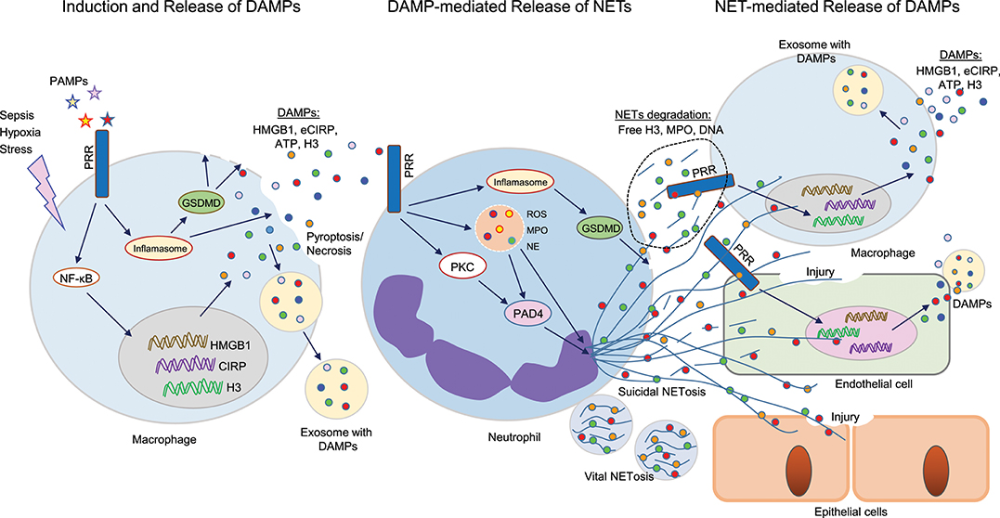- 2020 Jun;24(3):251-262. doi: 10.1007/s40291-020-00460-z.
Walter Gottlieb Land 1 2 PMID: 32248387
PMCID: PMC7127836
DOI: 10.1007/s40291-020-00460-z
Free PMC article
Abstract
This opinion article discusses the increasing attention paid to the role of activating damage-associated molecular patterns (DAMPs) in initiation of inflammatory diseases and suppressing/inhibiting DAMPs (SAMPs) in resolution of inflammatory diseases and, consequently, to the future roles of these novel biomarkers as therapeutic targets and therapeutics. Since controlled production of DAMPs and SAMPs is needed to achieve full homeostatic restoration and repair from tissue injury, only their pathological, not their homeostatic, concentrations should be therapeutically tackled. Therefore, distinct caveats are proposed regarding choosing DAMPs and SAMPs for therapeutic purposes. For example, we discuss the need to a priori identify and define a context-dependent “homeostatic DAMP:SAMP ratio” in each case and a “homeostatic window” of DAMP and SAMP concentrations to guarantee a safe treatment modality to patients. Finally, a few clinical examples of how DAMPs and SAMPs might be used as therapeutic targets or therapeutics in the future are discussed, including inhibition of DAMPs in hyperinflammatory processes (e.g., systemic inflammatory response syndrome, as currently observed in Covid-19), administration of SAMPs in chronic inflammatory diseases, inhibition of SAMPs in hyper-resolving processes (e.g., compensatory anti-inflammatory response syndrome), and administration/induction of DAMPs in vaccination procedures and anti-cancer therapy.
For More Information: https://pubmed.ncbi.nlm.nih.gov/32248387/
